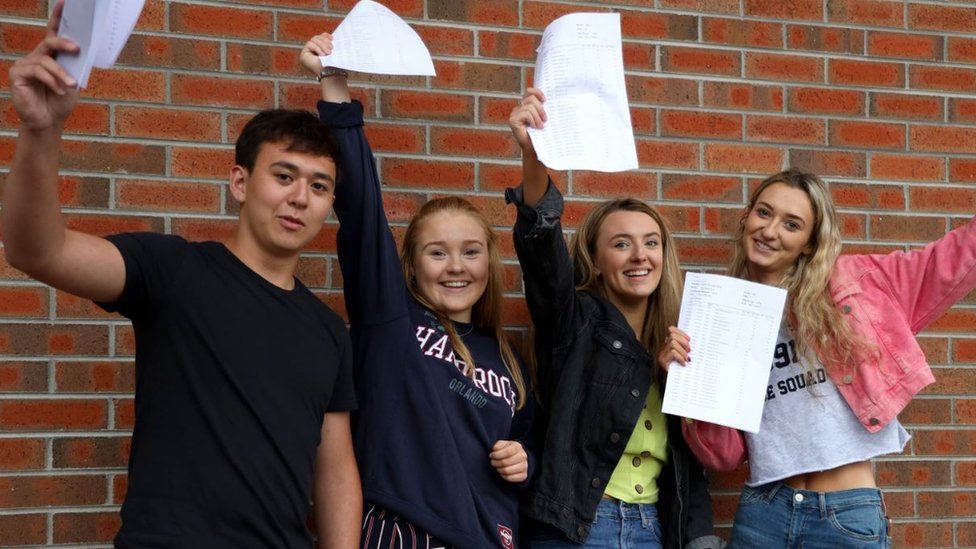GCSE maths: Pupils needed 397 marks out of 400 for A* grade
- Published

GCSE maths candidates in Northern Ireland needed very high marks to get a top grade this year.
In the maths qualification set by the CCEA - the NI exams board - the uniform grade boundary for an A* was 397 marks out of 400.
It is the highest grade boundary for the top grade among all GCSE subjects set by CCEA in 2019.
There was an overall fall in the proportion of A* grades awarded in Northern Ireland at GCSE this year.
Almost one-in-10 GCSE entries in 2018 got the top grade, but that fell to 7.7% of entries this year.
That was mainly due to a change in the grading system in Northern Ireland to align it to changes in English grades.
A new grading scale to include a C* grade was also introduced in Northern Ireland this year.
The Council for the Curriculum, Examinations and Assessment (CCEA) previously said the number of A* star grades it awarded would be reduced in 2019.
This is because the A* has been aligned to the new top grade nine in the new GCSE marks system in England.
Chief executive of CCEA, Justin Edwards, said that had also led to a change in how grade boundaries were set.
'Highest-performing'
"The method of setting the A* grade boundary has changed from 90% of the available marks to a formula based on the number of candidates achieving a grade A and above," he said.
"For the GCSE mathematics, as with all GCSE subjects, CCEA set the A* grade boundary according to the requirements of the new formula.
"The A* boundary has, as expected, moved higher and the number of learners achieving an A* has declined as a result."
"The changed GCSE mathematics A* boundary differentiates the very highest-performing candidates and aligns to the grade nine."
Mr Edwards also said it was difficult to compare grade boundaries this year with those set at GCSE in 2018 because of the changes.
Grade boundaries are weighted and may not reflect the actual number of raw marks needed to get a particular grade.
For example, the A* grade boundary for English language was 358 marks out of 400, while it was 357 for physics, 358 for biology and 373 for chemistry.
It was 366 out of 400 in Irish and 363 out of 400 in learning for life and work.
In English literature the A* grade boundary was 181 out of 200, while in further maths it was 182 out of 200.
In business studies it was 270 out of 300, in geography 273 out of 300 and 279 out of 300 in journalism.
- Published22 August 2019
- Published10 January